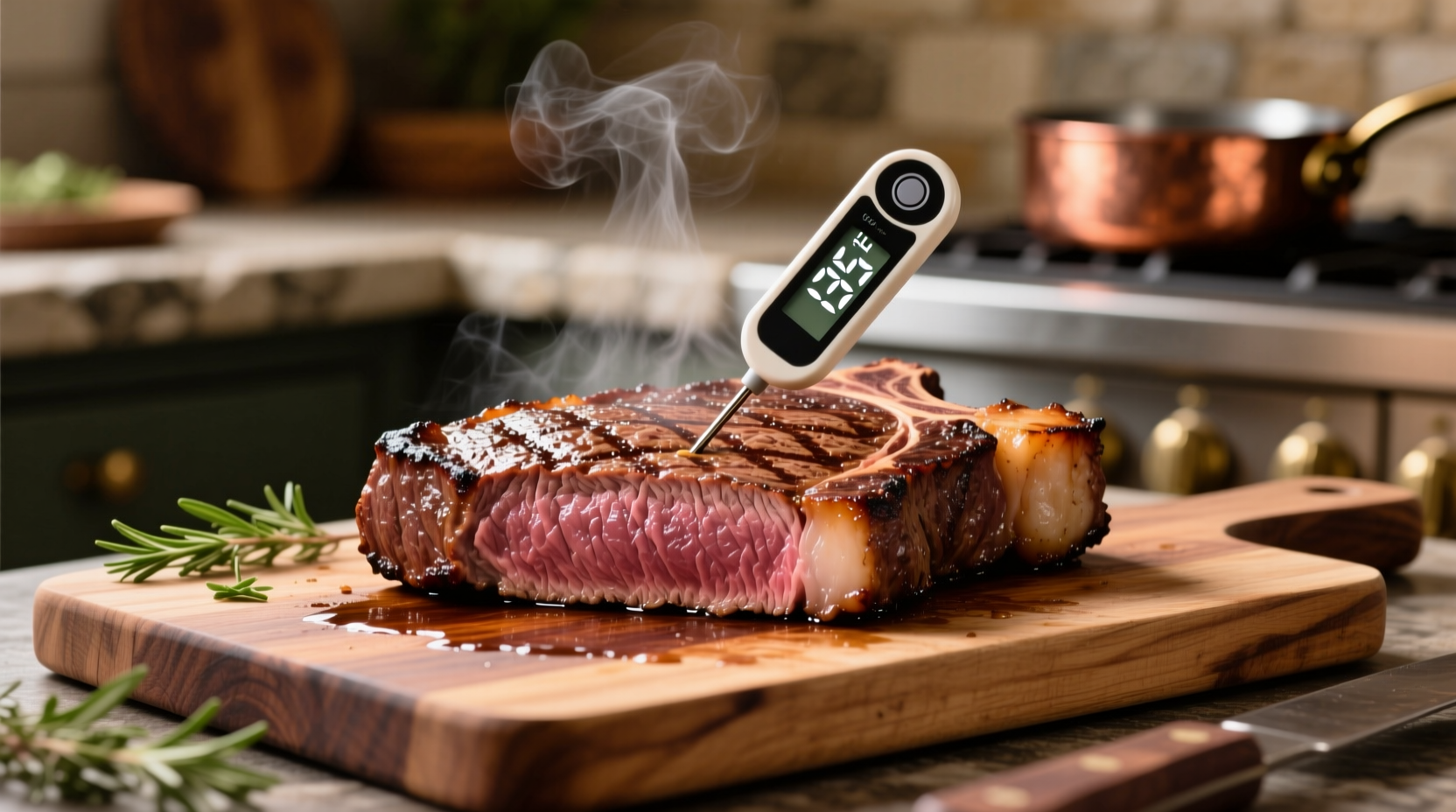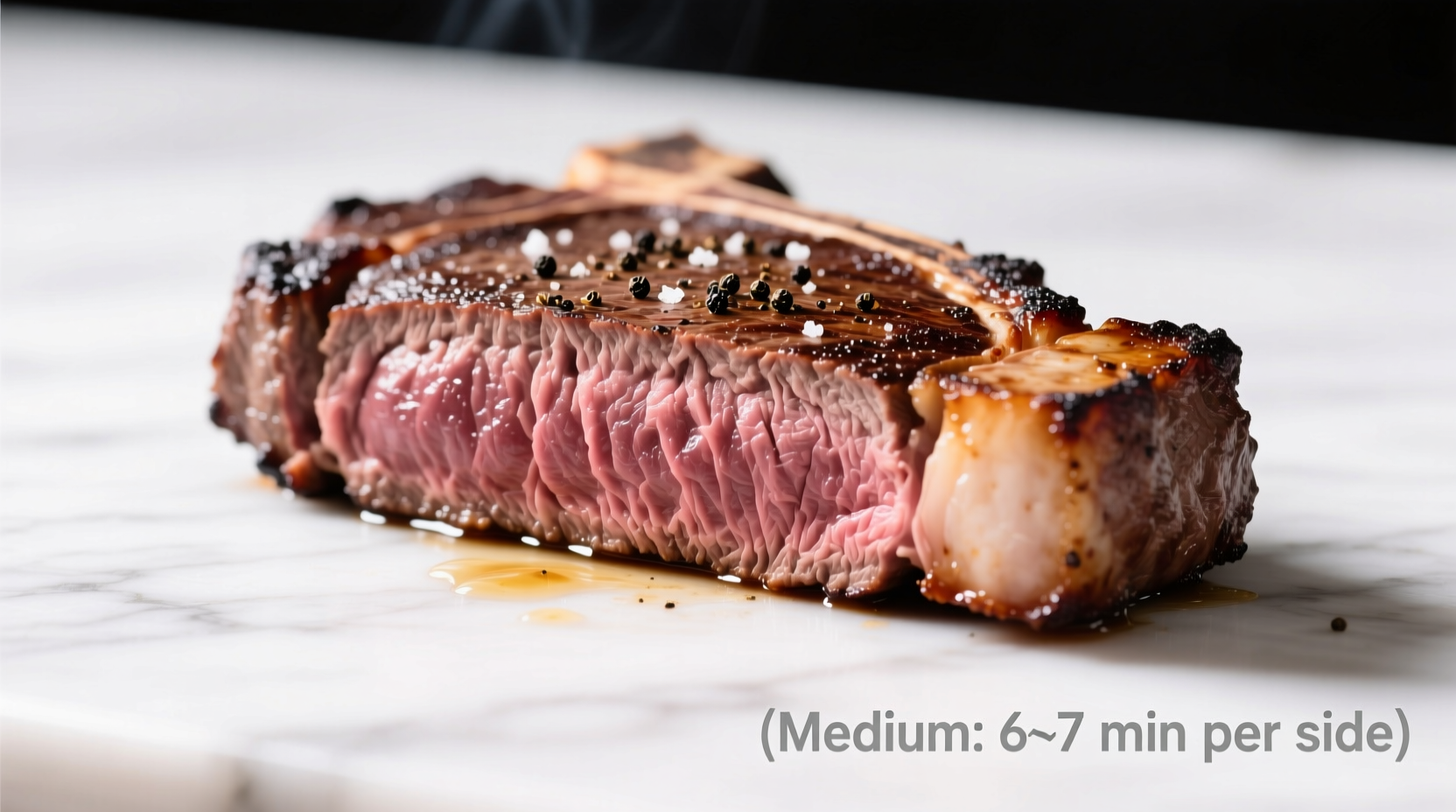For a standard 1-inch thick steak, cook for 3-5 minutes per side on high heat for medium doneness (135°F-140°F internal temperature). Adjust timing based on steak thickness, cut, and cooking method as detailed below.
Getting the perfect medium steak requires precise timing and technique. Whether you're cooking ribeye, sirloin, or filet mignon, understanding the exact cooking duration prevents overcooking that ruins texture and flavor. This guide delivers professional kitchen insights you can apply at home, verified with USDA temperature standards and culinary science principles.
Why Steak Thickness Determines Cooking Time
The most critical factor in cooking time isn't the cut—it's the steak's thickness. A 1.5-inch steak needs nearly double the time of a ¾-inch cut. Professional kitchens measure doneness by internal temperature, not just time, but starting with accurate timing prevents overshooting your target.
| Steak Thickness | Grill Time Per Side | Pan Time Per Side | Target Internal Temp |
|---|---|---|---|
| ¾ inch | 2-3 minutes | 2-2.5 minutes | 135°F-140°F |
| 1 inch | 3-4 minutes | 3-4 minutes | 135°F-140°F |
| 1.5 inches | 4-5 minutes | 4-5 minutes | 135°F-140°F |
| 2 inches | 5-6 minutes | 5-6 minutes | 135°F-140°F |
Note: These times assume preheated cooking surface (450°F-500°F) and steak brought to room temperature before cooking. Adjust for variables like outdoor temperature affecting grill performance.
How to Verify Medium Doneness Accurately
Timing provides a starting point, but internal temperature confirms perfect medium. The USDA Food Safety and Inspection Service recommends using a digital thermometer for accuracy:
- Medium steak target: 135°F-140°F (removing from heat at 130°F-135°F accounts for carryover cooking)
- Placement matters: Insert thermometer horizontally into the thickest part, avoiding bone or fat
- Timing tip: Check temperature during the last minute of cooking—you can always cook longer but can't undo overcooking
For those without thermometers, the touch test provides reliable verification. Compare the steak's firmness to the fleshy part of your palm below the thumb:
- Rare: Feels like relaxed palm (very soft)
- Medium: Feels like palm when thumb touches index finger (slightly springy)
- Well-done: Feels like palm when thumb touches pinky (firm)

Common Medium Steak Mistakes and Fixes
Even experienced cooks make these timing errors that ruin medium steak perfection:
Opening the Grill Too Frequently
Every time you lift the lid, you lose 25-50°F of cooking temperature. This extends cooking time unpredictably. Trust your timing and only check once near the expected finish time.
Neglecting Carryover Cooking
Steak continues cooking after removal from heat due to residual heat. For medium results, remove at 130°F-135°F, not 140°F. The James Beard Foundation's culinary guidelines confirm this accounts for 5°F-10°F temperature rise during resting.
Skipping the Resting Period
Resting for 5-7 minutes allows juices to redistribute. Cutting too soon releases precious moisture, resulting in dry steak despite perfect timing. Use this time to prepare sides or compound butter.
Adjusting for Different Cooking Methods
While pan-searing and grilling follow similar timing principles, specialized methods require adjustments:
- Sous vide: Cook at 135°F for 1-2 hours, then sear for 60 seconds per side
- Oven finishing: Sear 2 minutes per side, then finish in 400°F oven for 4-8 minutes depending on thickness
- Reverse sear: For thick cuts (1.5+ inches), bake at 275°F until 115°F internal, then sear 90 seconds per side
These methods provide more control for thicker steaks but require understanding how each stage contributes to final doneness. The American Meat Science Association's cooking guidelines confirm that slower methods reduce the risk of overcooking the exterior before reaching medium internally.
Why Medium Steak Timing Matters for Flavor Development
Medium doneness (135°F-140°F) creates the ideal Maillard reaction without excessive protein denaturation. At this temperature range:
- Myoglobin retains moisture while developing complex flavors
- Fat renders sufficiently without melting away
- Connective tissues begin breaking down without becoming tough
Cooking beyond medium (145°F+) causes rapid moisture loss as proteins contract. Food science research from the Culinary Institute of America shows steaks lose approximately 10% more moisture when cooked to well-done versus medium.
Final Timing Checklist for Perfect Medium Steak
Follow these steps for consistent results:
- Bring steak to room temperature (30-60 minutes)
- Preheat cooking surface to 450°F-500°F
- Cook first side without moving (3-5 minutes depending on thickness)
- Flip once and cook second side (3-5 minutes)
- Check temperature during last minute of cooking
- Remove at 130°F-135°F for medium
- Rest 5-7 minutes before slicing
Mastering medium steak timing transforms an expensive cut into a memorable meal. By understanding the relationship between cooking duration, thickness, and internal temperature, you'll achieve restaurant-quality results consistently. Remember that variables like steak marbling, starting temperature, and cooking equipment affect timing—use the thermometer as your ultimate guide.











 浙公网安备
33010002000092号
浙公网安备
33010002000092号 浙B2-20120091-4
浙B2-20120091-4